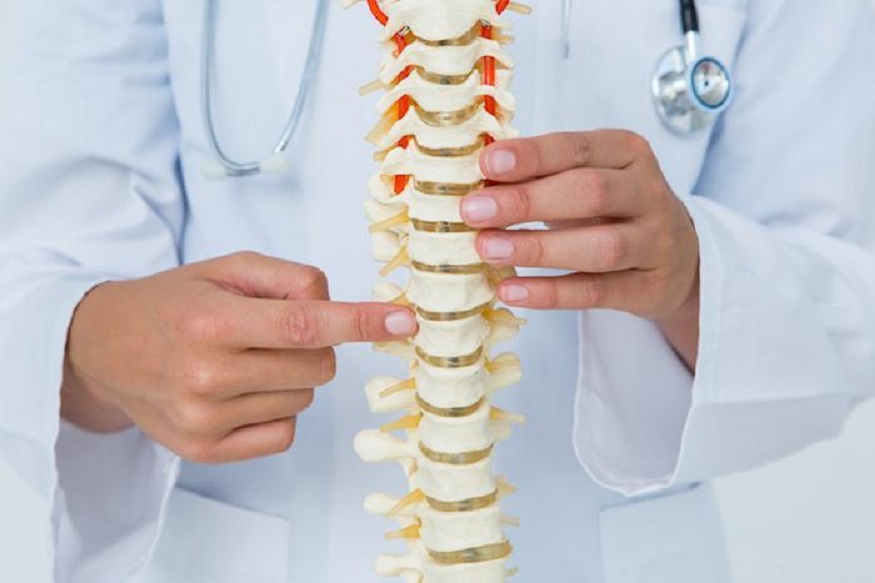
How Machine Learning Refines Candidate Selection for Disc Replacement Surgery
admin
- 0
Disc replacement surgery can be a life-changing procedure for patients suffering from degenerative disc disease and related spinal conditions. However, not everyone is an ideal candidate. Factors such as spinal alignment, disc health, bone density and overall lifestyle all play a role in determining suitability. Identifying the right patients has traditionally relied on static imaging, medical history reviews and surgeon judgment, but the margin for error remains high. Dr. Larry Davidson, an experienced specialist in spinal care, recognizes that machine-learning tools are reshaping how these decisions are made by offering greater accuracy and patient-specific insights.
Today, Machine Learning (ML) is enhancing this process by identifying subtle patterns and predictive variables that help refine candidate selection. These tools are making the selection process more precise, helping reduce surgical risks and ensure the best possible outcomes for each patient.
The Challenge of Identifying the Right Candidate
Unlike spinal fusion, which restricts movement, disc replacement aims to preserve mobility, while addressing pain and instability. Because of this, patient selection is even more critical; placing a motion-preserving device in an unsuitable candidate can lead to implant failure, continued pain or additional procedures.
Dr. Larry Davidson explains, “When considering the possibility of spinal disc replacement (artificial disc surgery), the key point is proper patient selection. This adage is true with respect to all aspects of spinal surgery.” His insight underscores a key principle in spine care: outcomes are influenced not only by the surgical technique but also by the individual receiving the procedure.
Surgeons have long used imaging and symptom profiles to screen patients. However, many borderline cases are difficult to assess with certainty. That’s where machine learning adds value by using a more comprehensive, data-driven method to assess risk and potential benefit on a case-by-case basis.
How Machine Learning Analyzes Candidate Data
Machine learning models are trained on extensive datasets that include information from thousands of past disc replacement cases. These datasets contain variables such as:
- Age, weight and overall health
- Disc height, hydration and degeneration levels from MRI
- Facet joint condition
- Spinal curvature and segmental alignment
- Pain scores and mobility limitations
- Surgical outcomes and post-op complications
By analyzing these variables, ML systems identify which factors most consistently correlate with successful outcomes and which combinations predict complications or implant failure.
Creating a Predictive Profile
Machine learning tools evaluate key patient data to generate a personalized profile that estimates how well an individual is likely to respond to disc replacement surgery. These predictions are informed by patterns observed in thousands of similar cases. This profile considers:
- Biomechanical suitability
- Healing potential based on age and health status
- Likelihood of symptom relief
- Risk of adjacent segment degeneration
- Compatibility with implant dimensions and materials
By offering a comprehensive overview of the patient’s strengths and potential risks, the predictive profile helps surgeons make well-supported decisions. It adds clarity to the screening process and increases confidence that approved candidates are well-positioned for positive outcomes.
Spotting Red Flags Earlier
One of ML’s most valuable contributions is its ability to flag risk factors that may not be obvious through conventional screening. For example, a patient with mild scoliosis and normal imaging might still show a poor probability of success due to underlying spinal instability, something the algorithm can detect through subtle markers in the data.
By catching these red flags early, surgeons can either modify the treatment approach or recommend alternative solutions like physical therapy, injections or spinal fusion.
Supporting Shared Decision-Making
ML also enhances patient-provider conversations. Instead of relying on abstract probabilities or best guesses, surgeons can share data-backed visualizations and explain why a particular recommendation is being made. Patients can see how their health characteristics compare to others who have had the procedure, giving them more confidence in the decision-making process.
This not only improves transparency but also sets realistic expectations for outcomes and recovery, leading to higher satisfaction and better adherence to post-operative care.
Enhancing Surgical Planning for Approved Candidates
Even once a candidate is approved for disc replacement, machine learning continues to play a role. The same systems that assess candidacy can recommend ideal implant sizing and placement angles and even simulate how the implant will behave over time based on posture and spinal loading.
This level of precision planning helps reduce surgical variability and ensures the best possible positioning of the implant, improving long-term durability and reducing the likelihood of revision procedures.
Reducing Unnecessary Surgeries
One of the unintended risks in spine surgery is performing procedures on patients who are unlikely to benefit. Machine learning helps mitigate this risk by providing an added layer of screening, which can prevent surgeries that would otherwise result in suboptimal outcomes.
This benefits not only the individual patient but also the healthcare system by reducing surgical costs, minimizing complications and improving the overall success rate of disc replacement procedures.
Addressing Bias and Model Validation
As with any AI-powered system, machine learning tools must be trained on diverse and representative datasets. Without proper validation, models could unintentionally favor or disadvantage certain populations. That’s why leading developers of ML tools in spine care include built-in audit features, ethical review processes and clinician oversight to ensure accuracy and fairness.
Surgeons should also remember that ML is a guide, not a replacement for professional judgment. The best outcomes still come from combining algorithmic insights with hands-on experience and thoughtful patient dialogue.
Next-Gen Patient Matching
The future of machine learning in disc replacement candidate selection will likely involve more detailed and diverse inputs. Genetic testing, wearable tracking data and even mental health assessments may be integrated into preoperative evaluations. These added layers will help refine predictions, allowing eligibility decisions to become even more personalized.
Advances in AI and imaging may also lead to the development of custom implants designed to fit a patient’s anatomy and support their natural movement patterns. These technologies could make it possible to tailor devices not only to the structure of the spine but also to the demands of each patient’s daily life.
Eventually, these tools could support real-time adjustments during surgery. Intraoperative feedback may guide placement decisions or prompt small procedural changes, helping ensure the implant aligns precisely with patient-specific needs.
Smarter Screening, Better Outcomes
Machine learning is reshaping how surgeons evaluate disc replacement candidates. From identifying eligibility to refining implant placement, these tools support more personalized, data-driven decisions. By combining predictive profiles with technologies like 3D printing and intraoperative guidance, providers can better match each patient to the procedure that fits their needs.
As this approach becomes more refined, disc replacement will continue to improve in safety, precision and long-term success. With smarter screening, patients are more likely to receive care that aligns with both their anatomy and their goals for recovery.


